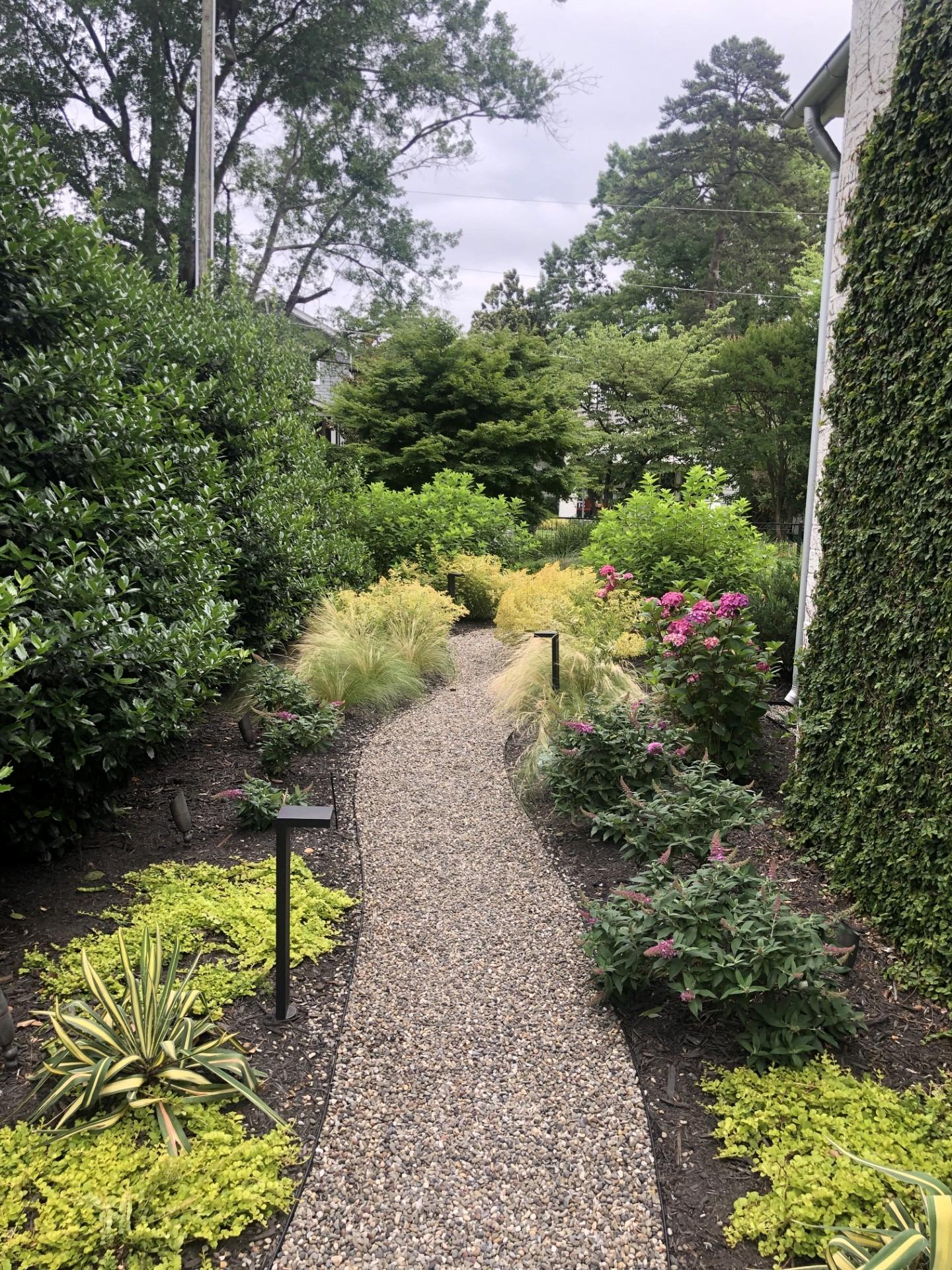Biophilic design is an architectural and interior design approach that seeks to incorporate elements of nature and the natural world into the built environment. It aims to improve well-being, reduce stress, and enhance productivity by fostering a strong connection between people and nature through the use of natural materials, greenery, and natural lighting. Biophilic design is the deliberate attempt to translate an understanding of the inherent human affinity to affiliate with natural systems and processes –into the design of the built environment.
Incorporating biophilic design principles into the landscaping of your home can transform your outdoor space into a sanctuary that connects you with nature. Here are some key ideas to consider:
- Native Plants: Select native plants for your garden, as they are well adapted to the local climate and support local wildlife. These plants require less water and maintenance, creating a more sustainable and biodiverse environment.

- Diverse Ecosystems: Create a variety of microenvironments in your landscape, such as meadows, wetlands, and wooded areas. This diversity attracts different species of birds, insects, and other wildlife, fostering a thriving ecosystem.
 3. Natural Materials: Use natural materials like stone, wood, and bamboo in hardscape elements like pathways, benches, and pergolas. These materials evoke a sense of authenticity and blend seamlessly with the environment.
3. Natural Materials: Use natural materials like stone, wood, and bamboo in hardscape elements like pathways, benches, and pergolas. These materials evoke a sense of authenticity and blend seamlessly with the environment.
4. Water Features: Incorporate water features like ponds, streams, or rain gardens to promote relaxation and attract aquatic life. The sound of flowing water can be soothing, and these features also help manage stormwater runoff.
5. Wildlife Habitats: Install birdhouses, bat boxes, and insect hotels to provide shelter and nesting sites for various creatures. Incorporating these elements encourages biodiversity and natural pest control.
6. Green Walls and Roofs: Integrate green walls or roofs into your design to add vegetation to vertical spaces. These features improve air quality, insulate your home, and create a striking visual connection to nature.
7. Outdoor Seating: Create inviting outdoor seating areas surrounded by plants and natural elements. This encourages you to spend more time outdoors, fostering a deeper connection with your surroundings.

8. Sensory Engagement: Incorporate elements that engage the senses, such as aromatic plants, wind chimes, and textured materials. These sensory experiences enhance the biophilic connection.

9. Seasonal Changes: Plan for seasonal changes in your landscape, ensuring it remains engaging and vibrant throughout the year. Choose plants that bloom at different times and display diverse foliage colors.

10. Maintenance Mindfulness: Embrace low-maintenance landscaping practices to minimize disruptions to the natural ecosystem. Limit the use of pesticides and chemicals to preserve the health of your biophilic oasis.
By embracing these biophilic design principles in your landscaping, you can create a harmonious and sustainable outdoor space that nurtures your connection with nature while enhancing the beauty and functionality of your home.